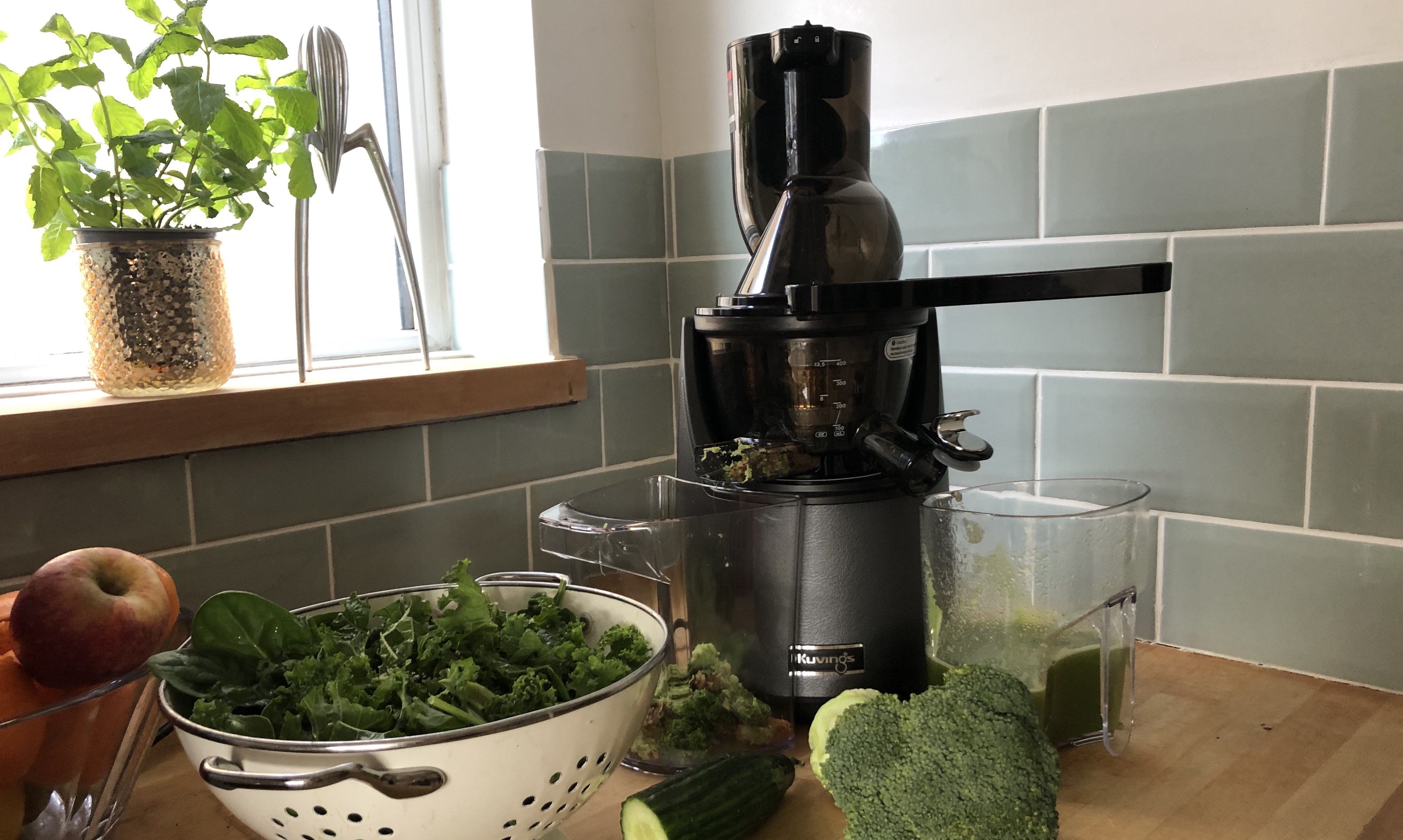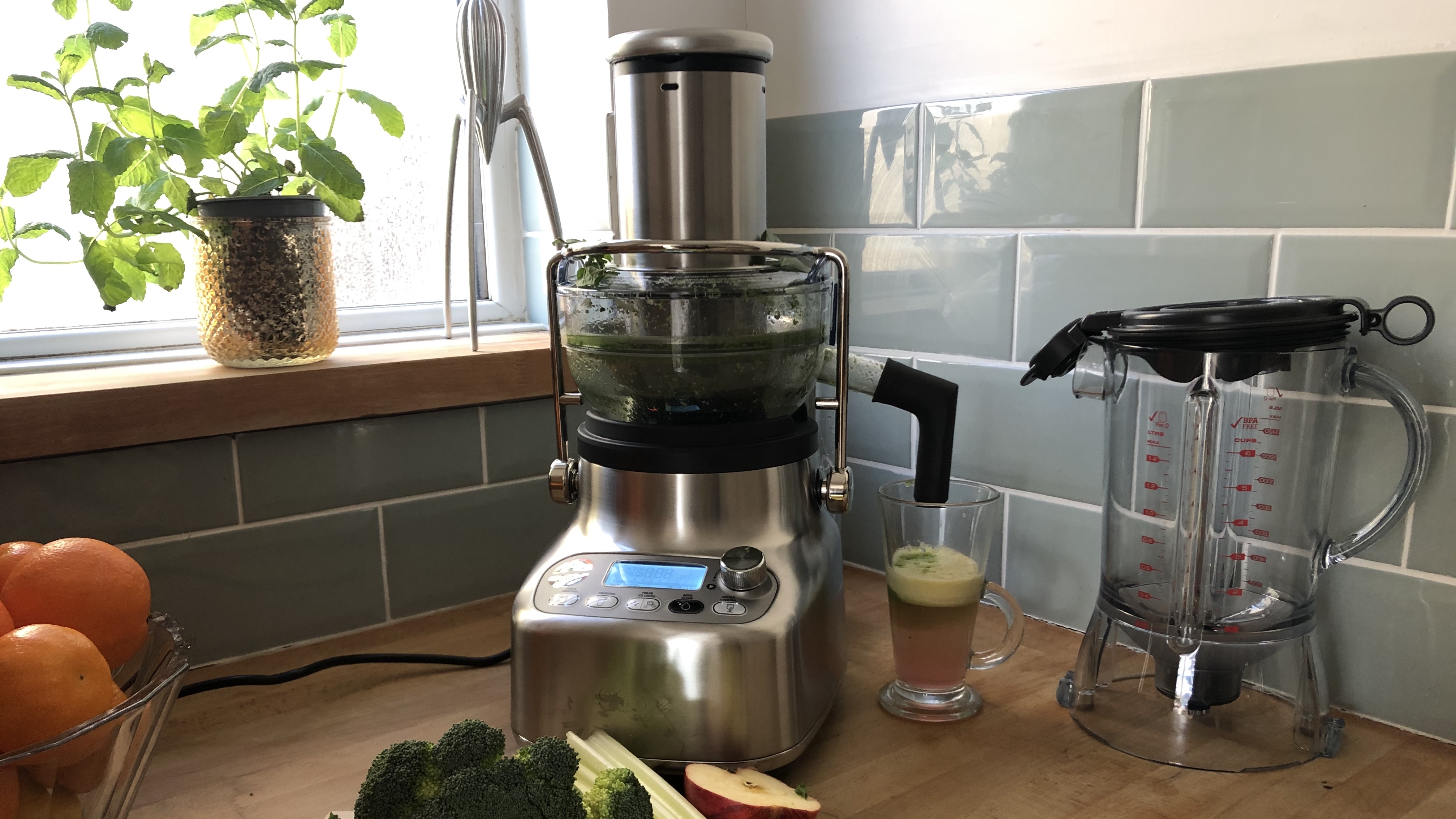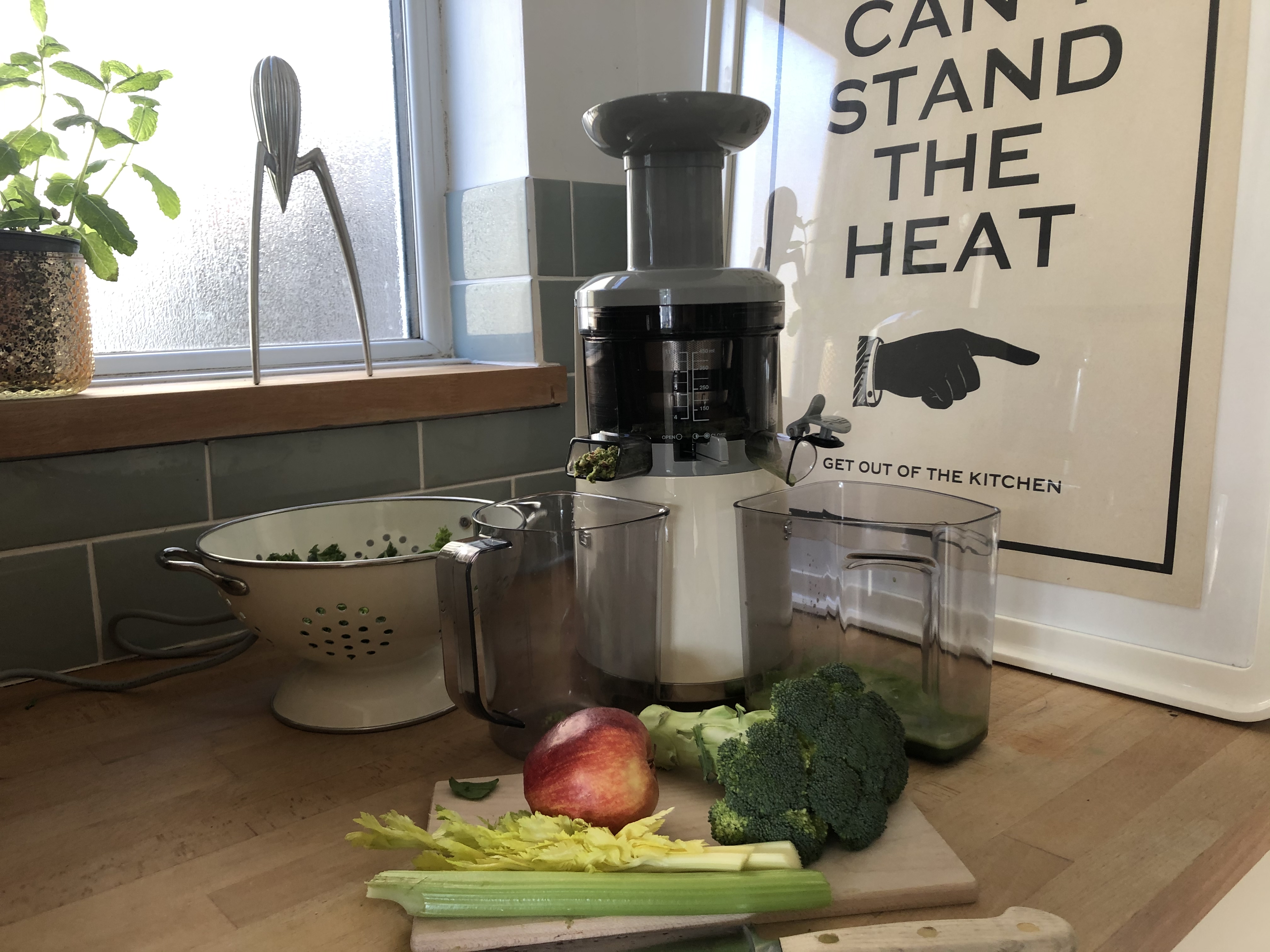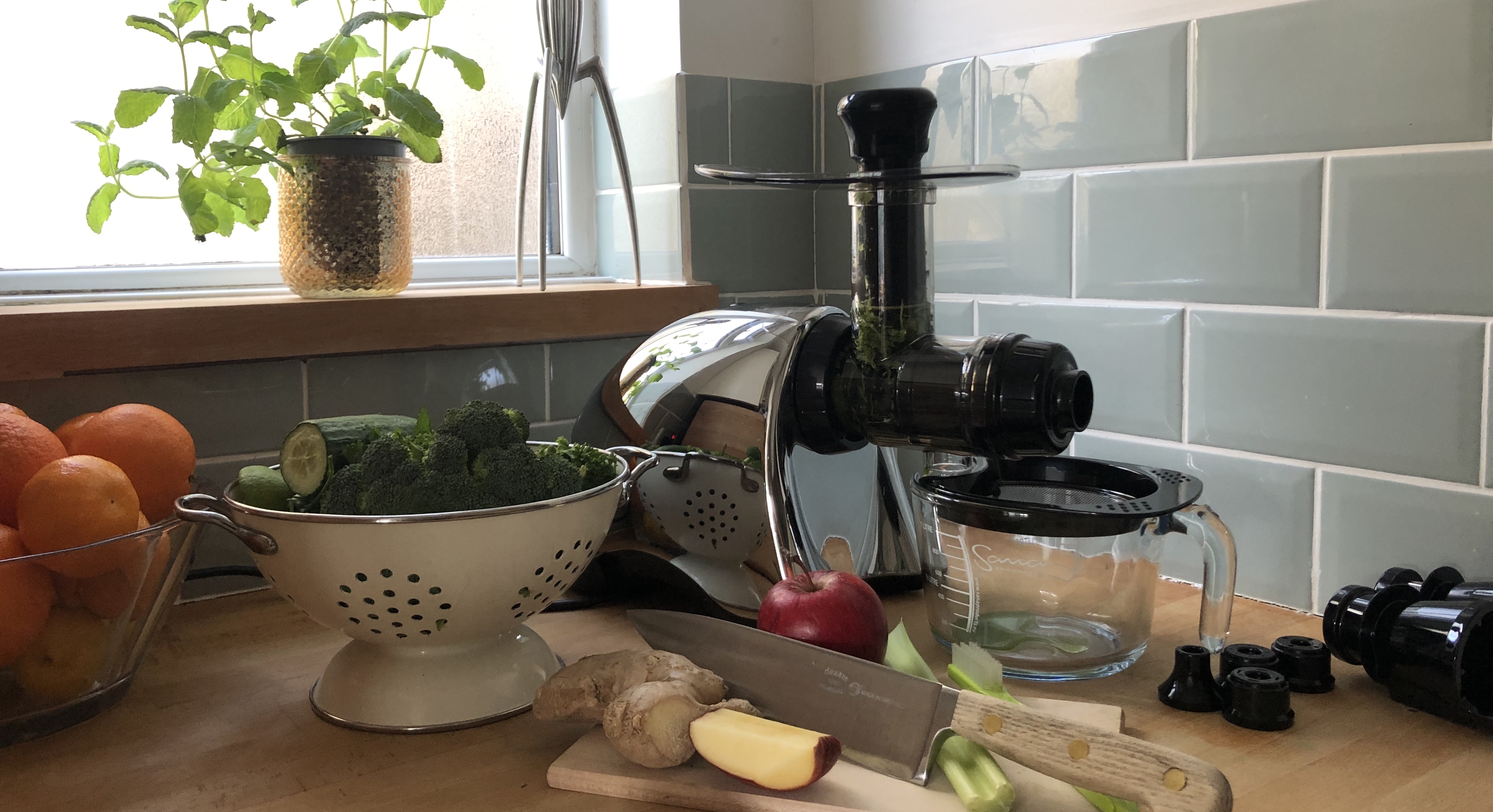Best juicer 2021: ranking the top juicing machines we've tested

The best juicer will take your breakfast (and other meals) to the next level by letting you sup freshly-squeezed orange and other nutrient-packed drinks without having to put in much effort at all.
There are two types of juicers to pick from; the best centrifugal juicers or the best cold press juicers, which are also known as slow juicers or masticating juicers.
Centrifugal juicers use a flat blade and spinning strainer to create fresh juice, and work best on firmer fruits and veggies. They're faster and more affordable than cold press juicers but they're noisier and create more heat which can break down the nutrients in the fruit quicker than slow juicers.
The best slow juicers, as the name suggests, take their time breaking down fruit and vegetables to ensure as many nutrients as possible are retained and every drop of juice is extracted. Find out more about how the best masticating juicers work by reading what is a cold press juicer?
Unlike the best blenders, which puree every ounce of the fruit and vegetables that come into contact with its blade, the best juicers squeeze out the liquid from fruits and veggies, leaving you with a silky smooth drink. Juicers vs blenders offer a more in-depth look at how the two appliances differ.
Many of the best juicers can do more than create silky smooth drinks, some have attachments and can be used to prepare everything from nut butter to fresh pasta and even grind coffee, while others have a built-in separator to remove excess froth from your drinks.
Aside from the type of juicer you need, consider the size of the machine and where you’re going to keep it. It’s also worth bearing in mind how easy each machine is to clean as this can be a time-consuming process.
We’ve spent hours in the kitchen testing how well some of the most popular juicer brands including Breville and Smeg, which also produce some of the best coffee makers, compare when squeezing everything from oranges and apples to carrots, kale, and even celery into silky smooth juices to find the best juicers you can buy right now.
The best juicers 2021: ranked

The Kuvings Cold Press Juicer is available in six stylish colors including Champagne Gold, Gunmetal, Red and Black. It comes with a comprehensive recipe book for drinks such as Red Vitamin Radish Juice, which features radishes, tomatoes, carrots, and lemons. There’s also a Tomato Soup that includes pulp from juiced potatoes, cabbage, onion, carrot and tomato.
The Kuvings Cold Press Juicer doesn’t come cheap, but with its relatively heavy base and stylish body you can tell you’re paying for a durable, serious piece of kit. While making a green juice, we were impressed at how well the machine tackled the ingredients and in particular how quickly it juiced drier ingredients such as broccoli and spinach.
The machine can handle a whole apple and was the quietest machine in our test – reaching a mere 80 decibels when chewing a floret of broccoli. It took 26 seconds to juice half an apple, efficiently chewing the skin and producing a decent amount of juice. Meanwhile, it took around 20 seconds to devour a stick of celery, which did need to be prodded a few times with the pusher. Safety-wise the machine won’t start unless the red dots are aligned correctly and the feeding chute is rather tall so hands can’t go near the drum. The froth on the green juice we produced was noticeably thicker on this design compared to others in our test, but this was easily separated when we poured the juice into a cup.
Read our full Kuvings EVO820 Evolution Cold Press Juicer review

Unlike the other juicers in our round-up, the Sage 3X Bluicer Pro doubles up as a blender. On first look, its informative LED control panel display stands out. This navigates you through the controls and lets you adjust the speed, which is a feature we think is lacking on standard juicer appliances.
In our round-up of best juicers, we found the Sage to be the noisiest design, gearing up to a hefty 91 decibels when juicing a floret of broccoli. It came up top in terms of speed, however, juicing an apple in just 10 seconds. Inside the box you’ll find an instruction manual and Juicing Speed Selection Guide, and this came in very helpful when we were trying to work out which speed to juice certain foods. A grapefruit for example is classed as a soft fruit and needs to be on a slow and steady level 1, while a carrot will need ramping up to fast and furious level 10.
Read our full Sage 3X Bluicer Pro review

The attractive retro body on the Smeg SJF01 Slow Juicer certainly looks good on the worktop, but its basic functions are a little less luxurious. Designed to match Smeg’s iconic range of 1950s small and large appliances, this juicer comes with all the basics including a fine and coarse strainer, a juice jug with lid, a pulp container and two cleaning brushes.
In our test it did well to juice the celery, which could be easily inserted into the chute once chopped and coaxed down with the pusher and took just 10 seconds to turn into a clear green juice. Sound ramped up to 89 decibels when juicing the broccoli floret so it was one of the noisier designs in our test, but the juice came out surprisingly smooth, with minimal froth on top.
Like many of the designs in our test, the Smeg will only work when slotted into place correctly. We did, however, find ourselves having to hold onto the pusher when juicing harder fruits to prevent the juicer body from shaking on the worktop.
Read our full Smeg SJF01 Slow Juicer review

With a variety of tools for performing much more than creating a simple juice, we think the Sana EUJ-707 juicer by Omega is great value for money. As well as juicing, the horizontal design comes with useful attachments for tasks such as grinding coffee beans, making fresh spaghetti, nut butters, and baby food.
While preparing a green juice, we found it to be the most effective when tackling leafy greens such as kale and spinach, trickling out far more juice from these ingredients compared to the other designs in our test. The design comes with both a coarse strainer and fine strainer and the one you use really does make a difference to the results - while using the fine strainer on an apple, for example, we found the drum and tubes got rather foamy, so it's advisable to stick to the coarse strainer for harder fruits.
You will need a little patience to use this model – it can’t take on a whole apple, for example, and you’ll need to chop the fruit before inserting – after 30 seconds it was still chewing the apple. When tackling the celery the machine started to squeak a little too, but the amount of juice yielded was impressive. It doesn’t get too noisy either, reaching a reasonable 81 decibels in our broccoli floret test. While there are no dishwasher-safe parts, its dedicated cleaning brush teamed with a little warm soapy water works well to clean the parts after use.
Read the full Sana EUJ-707 Juicer by Omega review
How we test juicers
To find the best juicers we’ve spent hours in the kitchen putting the top models to the test to make a green juice from broccoli, celery, pears and ginger, while also juicing carrots, oranges and apples. As well as evaluating how smooth the drinks are and how fast they’re dispensed, we’re also looking for whether bitterness from the pith and pulp has tainted the taste of the juice, how much foam has been created in the drink and if there’s any remaining fresh produce in the appliance that hasn’t been juiced.
For each model we rate how loud they are, how durable and easy to clean the body and parts are, if the chute is wide enough for whole fruits and vegetables or whether they need to be chopped before juicing, and if it splashes and drips during and after use.
What are cold press juicers?
Cold press juicers extract liquid from fruits and veggies without using any heat in the process. These types of juicers are popular because the lack of heat helps to preserve the nutrients and vitamins in the juice. The juice normally lasts longer than when you make it using other types of juicers.
For the full pros and cons, check out our feature answering what is a cold press juicer?
Juicers vs blenders
Juicers have been designed to extract the liquid from fresh produce. As we’ve covered above, there are a few different types of juicers and some use sharp blades to break down the fruits and veggies, whereas others slowly press the ingredients to release the liquid. Once the juice has been created, you’ll have the leftover parts of your produce.
Blenders work differently because rather than extracting juices, they break down the entire contents of the blending jug to create a smooth mixture and don’t leave anything behind. For a full round-up of the pros and cons of both juicers and blenders, head to our feature on Juicers vs blenders: what’s the difference?
How to clean a juicer
Cleaning a juicer isn’t always easy, especially as there are lots of small crevices where fruit or veggies can get stuck and start to build-up. Staying on top of the cleanliness of your juicer will help keep your juice tasting as fresh as possible while ensuring the machine is hygienic too.
To give your juicer a deep clean, switch it off and unplug it, and then take all the removable parts off the machine so that you can clean them. Place all loose parts in warm water and add some dish soap - you can give these a scrub with a cloth or a scrubbing brush. If this isn’t enough to remove stubborn build-up, rinse the parts in water and then soak them in white vinegar.
For the smaller and more awkward parts of the juicer that seem impossible to reach, you might need to invest in some micro scrubbing brushes. You can pick up scrubbing brushes designed to reach awkward areas at Amazon.com or Amazon.co.uk.
You can use a spoon or a spatula to remove the pulp from the machine and press a small sponge inside the pulp tray to soak up any bits of pulp that are stuck behind.
- Best vacuum cleaner: get your home spotless with these top machines
from TechRadar - All the latest technology news https://ift.tt/3CO1wgu

Post a Comment